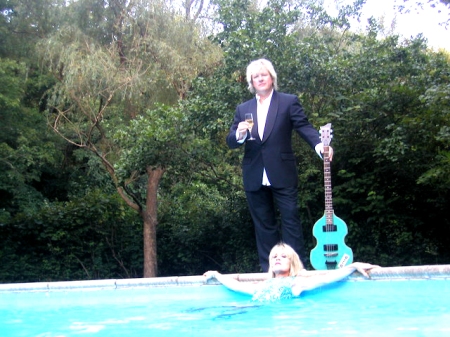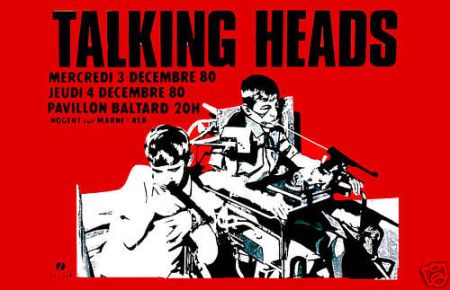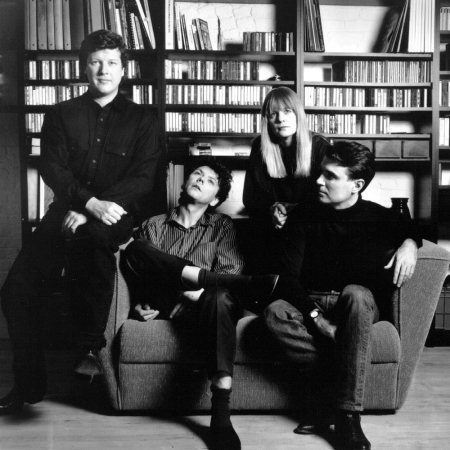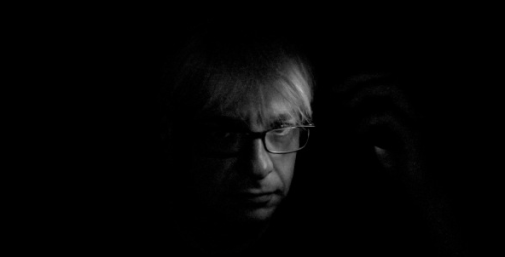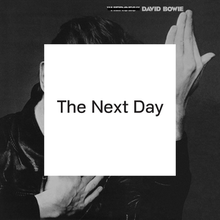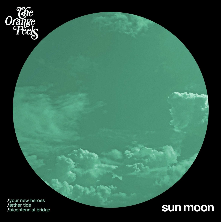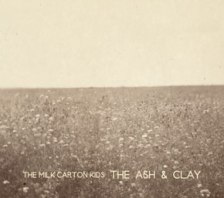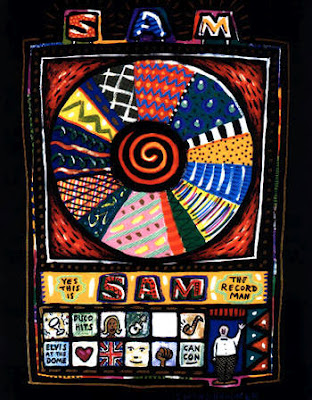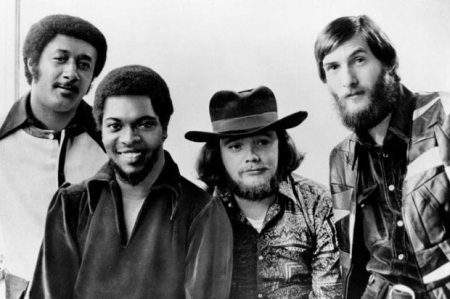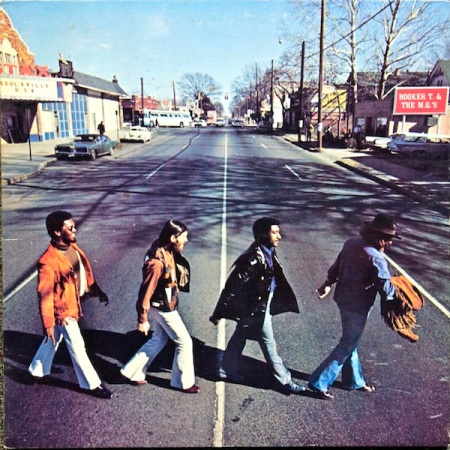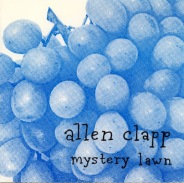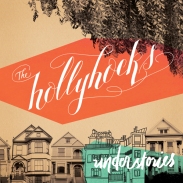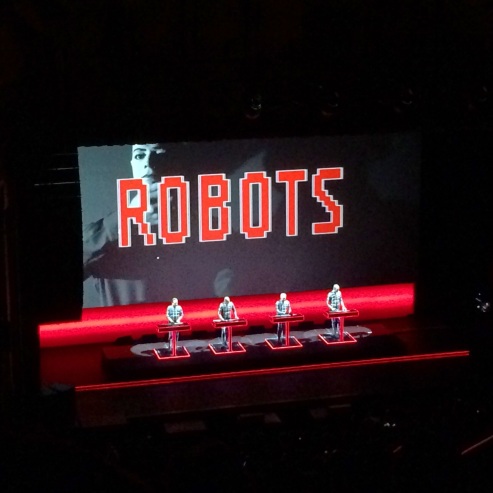 Kraftwerk 3D Tour – The Fox, Oakland, Monday, March 24th
Kraftwerk 3D Tour – The Fox, Oakland, Monday, March 24th
The night the circuits came to town. Having never seen the original line-up, I’ll take what I can get, and besides this Kraftwerk greatest hits show, with 3D glasses, robotic and somewhat anonymous performers, and an elaborate yet minimal multimedia presentation was more about the experience than musical virtuosity. Having said that, it was a virtuoso demonstration of all the ways in which Kraftwerk are true pioneers of Teutonic electronica. What a treat to experience such delights as “The Robots,” “Autobahn,” “The Model,” “Trans Europe Express,” “Tour De France,” and the lovely “Neon Lights.” If such futurism seemed ironically nostalgic, the show proved that not only were Kraftwerk on-the-money prescient about our “Computer World,” but with the background screens for “Radioactivity” adding the name of Fukushima to a chilling list of nuclear disasters, along with Hiroshima, they reminded us that some things never seem to change at all.
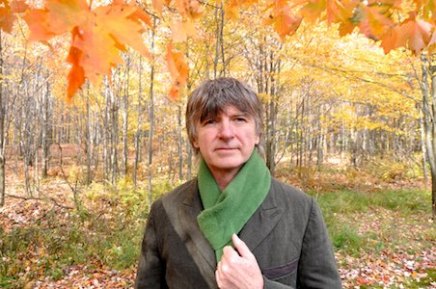 Neil Finn – Palace Of Fine Arts, San Francisco, Tuesday April 1st.
Neil Finn – Palace Of Fine Arts, San Francisco, Tuesday April 1st.
History never repeats, but sometimes it’s worth dipping your toe in the back catalogue. I’ve been a Neil Finn fan since he joined his brother Tim‘s band, Split Enz, and transformed them from a post-Roxy Music art rock album band into chart bound hit-makers with songs like “I Got You” and “One Step Ahead.” In fact, I was one of the first people I knew to buy the debut record of his next band, Crowded House, and over the ensuing years, I have noted with awe and admiration Neil’s refinement into a master of textured and dreamlike songcraft, harnessing a McCartney ear for melody, and a Lennon eye for word painting.
 Touring this year to support his newest step into the ether, the aptly named Dizzy Heights album, Finn, a convivial host and true showman, assisted by his wife Sharon on bass, lead a band of relative youngsters through a songwriting master class that showcased the new stuff (“Flying In The Face Of Love,” “Dizzy Heights”) while gracing us longtime fans with a retrospective set that touched on Split Enz (“History Never Repeats,” “One Step Ahead,” “I Got You,” and “Message To My Girl”) Crowded House (“Fall At Your Feet,” “Don’t Dream It’s Over,” and “Locked Out”) and solo faves like “She Will Have Her Way,” and “Try Whistling This.” I was whistling all the way home afterward.
Touring this year to support his newest step into the ether, the aptly named Dizzy Heights album, Finn, a convivial host and true showman, assisted by his wife Sharon on bass, lead a band of relative youngsters through a songwriting master class that showcased the new stuff (“Flying In The Face Of Love,” “Dizzy Heights”) while gracing us longtime fans with a retrospective set that touched on Split Enz (“History Never Repeats,” “One Step Ahead,” “I Got You,” and “Message To My Girl”) Crowded House (“Fall At Your Feet,” “Don’t Dream It’s Over,” and “Locked Out”) and solo faves like “She Will Have Her Way,” and “Try Whistling This.” I was whistling all the way home afterward.
 Elvis Costello: The Last Year Of My Youth solo – Carnegie Hall, NYC Wednesday June 25th.
Elvis Costello: The Last Year Of My Youth solo – Carnegie Hall, NYC Wednesday June 25th.
I am a lucky man. Good things happen to me sometimes. Upon hearing that I was going to be in New York on June 25th, my friend Tim invited me to come meet him at work if my plane got in on time. That my friend Tim is the guitar tech for Elvis Costello meant that I found myself, having just landed at JFK, dropping my bag at the hotel and then scrambling up to Carnegie Hall for a marathon Costello retrospective solo show he had named The Last Year Of My Youth. When I finally made it to my seat I, he was halfway through “Blame It On Cain,” and thanks to Setlist.fm I discovered that he’d already blown through “Welcome to the Working Week,” “Miracle Man,” and “No Dancing.”
 While I was sorry to have missed those, by the end of the nearly three-hour set, I could not complain. Another performer who has only improved with age, Costello is able to transform Carnegie’s cavernous Isaac Stern Auditorium into an intimate showcase club and the vocal dexterity to go from a whisper to a scream (probably one of the only songs he didn’t include on this night). The man works hard up there, but still seems to be genuinely thrilled to be able share each of the songs he’d curated into in this 38-song set which drew from his own voluminous songbook (“Alison,” “Watch Your Step,” “Everyday I Write The Book,” “Beyond Belief,” “Green Shirt,” “So Like Candy,” “Watching The Detectives,” “Man Out Of Time,” “I’ll Wear It Proudly” and more) but also his pal Nick Lowe’s reliable “(What’s So Funny ’bout) Peace, Love and Understanding,” George Jones’ “Stranger In The House,” and the Fred Ahlert & Roy Turk chestnut, “Walkin’ My Baby Back Home.” If the way to get to Carnegie Hall is “practice, my dear boy,” then Declan Patrick Aloysius MacManus, who turned 60 one month after this show, proved once again that practice makes perfect.
While I was sorry to have missed those, by the end of the nearly three-hour set, I could not complain. Another performer who has only improved with age, Costello is able to transform Carnegie’s cavernous Isaac Stern Auditorium into an intimate showcase club and the vocal dexterity to go from a whisper to a scream (probably one of the only songs he didn’t include on this night). The man works hard up there, but still seems to be genuinely thrilled to be able share each of the songs he’d curated into in this 38-song set which drew from his own voluminous songbook (“Alison,” “Watch Your Step,” “Everyday I Write The Book,” “Beyond Belief,” “Green Shirt,” “So Like Candy,” “Watching The Detectives,” “Man Out Of Time,” “I’ll Wear It Proudly” and more) but also his pal Nick Lowe’s reliable “(What’s So Funny ’bout) Peace, Love and Understanding,” George Jones’ “Stranger In The House,” and the Fred Ahlert & Roy Turk chestnut, “Walkin’ My Baby Back Home.” If the way to get to Carnegie Hall is “practice, my dear boy,” then Declan Patrick Aloysius MacManus, who turned 60 one month after this show, proved once again that practice makes perfect.
 Tom Petty & the Heartbreakers – Outside Lands, Golden Gate Park, Saturday August 9th.
Tom Petty & the Heartbreakers – Outside Lands, Golden Gate Park, Saturday August 9th.
From the opening strains of Roger McGuinn and Chris Hillman’s Byrds hit “So You Want to Be a Rock ‘n’ Roll Star,” Tom Petty, backed by his fabulous Heartbreakers, made it clear that he’s entirely comfortable being both a journeyman singer/songwriter and a festival-packing rockstar. That I’d never experienced one of their shows until now is my bad, but I’m just glad to have this one off my *bucket list. (Note: I keep no such list and while I do own a bucket that is neither here nor there)
Tom’s longtime songwriting foil, guitarist Mike Campbell, is not only the ‘breakers’ musical director, he’s the Richards to Petty’s Jagger, and can steal the show with one bent guitar note or a well-placed jangle. And yet, like each member of the Heartbreakers, including Petty himself, Campbell chooses to keep his head down and play in service to the band’s sound as a whole. Benmont Tench is taste personified and seems to know just when to swoop in on organ or play the right three notes on the piano. Drummer Steve Ferrone is the new guy even though he’s actually been in the band for almost 20 years.
 Their 19 song set might look short compared to the above marathons by Costello and Finn, but they were headlining an all-day Outside Lands bill which included what I believe was Chris Walla‘s last gig as a member of Death Cab For Cutie, so they probably played a third of what they’d normally play.
Their 19 song set might look short compared to the above marathons by Costello and Finn, but they were headlining an all-day Outside Lands bill which included what I believe was Chris Walla‘s last gig as a member of Death Cab For Cutie, so they probably played a third of what they’d normally play.
TP & The Heartbreakers were promoting their 13th studio album, the Grammy nominated Hypnotic Eye, and their set included three numbers from it (“American Dream Plan B,” “Forgotten Man,” and “U Get Me High,”) but with a such a deep back catalogue and so little time, the set leaned heavily on hits, including thrilling versions of “Mary Jane’s Last Dance,” “Into The Great Wide Open,” “Refugee,” and “Learning To Fly.” Petty’s solo album Full Moon Fever got as much love as the new one (“Won’t Back Down,” “Free Fallin’,” and “Running Down A Dream,”) while the Traveling Wilburys were represented by “Tweeter And The Monkey Man.” A friendly nod to Golden Gate Park’s smoky past came in the form of the Grateful Dead’s “Friend Of The Devil,” deadicated to Jerry. Fittingly, the closed their encore with an exhilarating take on their early hit, “American Girl,” which took a great feeling and made it last it all night.
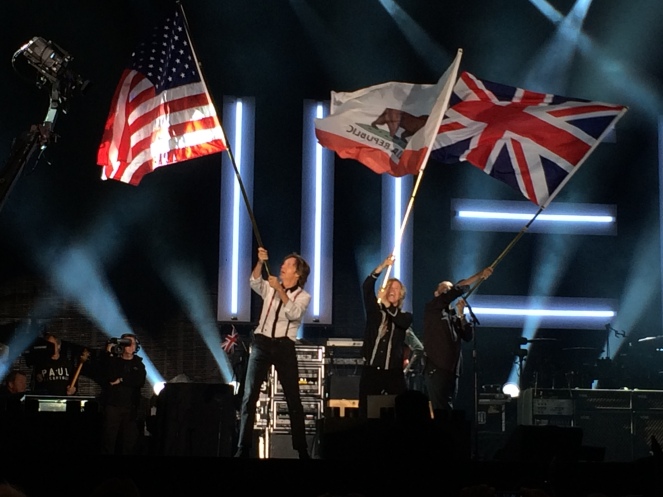 Paul McCartney: Out There (Farewell To Candlestick) – Candlestick Park, SF Thursday August 14th
Paul McCartney: Out There (Farewell To Candlestick) – Candlestick Park, SF Thursday August 14th
I’ve seen Paul twice previously, and each time is a semi-religious experience for me. To say that my own songwriting is, shall we say, “highly informed” by McCartney’s (along with Lennon and Harrison, who of course have left us) is a laughable understatement and his back catalogue is deep with “Oh my god, he wrote that one too!” moments. He really is the Pope of Pop, and his St. Peter’s Square is whatever enormodome du jour he happens to be blessing. But the real miracle is that McCartney, at 72, still cares about the details, about engaging with his multi-generational and ever evolving fanbase, and that he’s still such a great showman. And then there’s his longest standing band, Brian Ray, Abe Laboriel, Jr., Rusty Anderson, and the longest standing of them all, Wix. These guys know that it’s more than a museum piece up there, it’s a living thing, and these songs need to be alive. Songs like “And I Love Her,” “Back In The USSR,” “The Long And Winding Road,” “Hey Jude,” “Lady Madonna,” and more. You’re not going to recreate Beatlemania, you can go to Beatlemania (the show) for that, but what these guys do, night after night, is make the connection to millions of lives. Because a Macca show is not just nostalgia, although that is a factor, it’s a great set list of songs, performed by the composer himself, in a way that honors both his audience and his body of work. The fact that this particular night was the last concert ever at Candlestick Park added a layer of significance to the occasion. The Beatles as you may know, played their last concert here on August 19, 1966, and fittingly, the band covered “Long Tall Sally” the Little Richard number that close the Fabs’ Candlestick set all those summers ago.
And you know what? As big a Beatles guy as I am, I was just as thrilled by the high number of Wings and Paul solo albums represented in the 40 song set. “Hi, Hi, Hi,” “Band On The Run,” “Listen To What The Man Said,” “Live And Let Die,” “Another Day,” “Let Me Roll It,” and stuff from his underrated recent albums like “Save Us,” “Queenie Eye,” and “New.” And then there were the songs for absent friends and lovers, a tear-inducing “Here Today,” for John, a touching “Something” (begun on ukelele and building into a full band version) for its composer, George, “Maybe I’m Amazed” for his most famous muse, Linda… to paraphrase George himself, it was all too much, and I felt blessed to be among this congregation on this special night in San Francisco.
 Liam Finn – The Chapel, Tuesday, August 19, 2014
Liam Finn – The Chapel, Tuesday, August 19, 2014
While he shares both physical and musical DNA with his famous father Neil, and a passing vocal similarity to his Uncle Tim, Liam Finn is a beast all his own. And on this August night at The Chapel, vastly becoming one of my favorite San Francisco venues for music, his well-paced set was comprised of angular slabs sonic mayhem and engaging melodies, with a winning passion. Selling a strong new album, The Nihilist, and featuring songs from his previous releases, I’ll Be Lightning and FOMO, Finn was the consummate showman, and his band, including his brother Elroy Finn on drums, and longtime collaborator Eliza-Jane Barnes, are no slouches either. I met Liam when he was just a kid, and it’s been a pleasure to watch him develop into one of the best acts in whatever we’re calling rock these days.
Blackie & The Rodeo Kings – Hardly Strictly, Golden Gate Park, Sunday October 5th.
I only had a bit of time on this day so I bolted over to Golden Gate Park alone, mid-afternoon on BART and Muni, just in time to catch the set by my Canadian friends Blackie & The Rodeo Kings, fronted by the incredible Tom Wilson, Colin Linden and Stephen Fearing. I could tell there were a lot of Canucks in the park (the odd Toronto Maple Leafs logo here and there, etc) but I also sensed that there were many in the crowd who just come for the festival or were camped in their seats for a later act on the bill, and those people must have wondered what hit them. These guys are true men of song, and worked really hard in their short festival set. I was happy to see them do that and kinda proud of my homeboys. Later I scooted over to a smaller stage and enjoyed a wonderful short set by Nashville’s Caitlin Rose, then made it over to catch the last few songs of Tweedy, who I think I’d rather see in a place where I can see and hear them better. Regrets that I couldn’t stick around to see my homeboy Bruce Cockburn (backed by Colin Linden) and that I didn’t make more of an effort this year to take in all of this amazing free festival, held every fall in the park. It’s always a pleasure.
 Inara George & Van Dyke Parks, with Awesöme Orchestra – Z Space, SF, October 9th
Inara George & Van Dyke Parks, with Awesöme Orchestra – Z Space, SF, October 9th
Inara George (whom you may know from The Bird & The Bee, or The Living Sisters, and being the daughter of Little Feat’s Lowell George) has a voice that angels would envy and a graceful easy way as a performer. Add the fact that she was accompanied on this night by Awesöme Orchestra, San Francisco’s all-volunteer symphonic army, who performed with, and under the direction of, the delightful Van Dyke Parks. Then, add to this some (possibly) death-defying aerial choreography by Lexi Pearl, and you’ve got an invitation to one of my favorite concerts of the year.

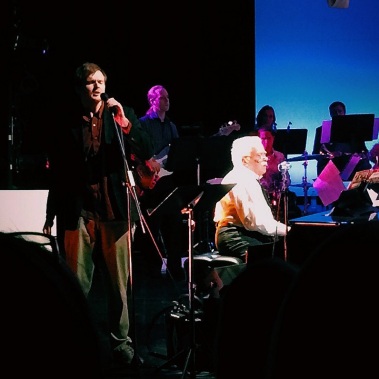 The material was largely made up Inara and Van Dyke’s album An Invitation (you should get that one) and a selection of VDP’s works from his various wonderful albums. And speaking of aerial ballet, Kiefo Nilsson, Harry’s boy, even got up to sing one of his dad’s numbers “Salmon Falls,” and brought down the house. What a standout magical night in a year of magical nights.
The material was largely made up Inara and Van Dyke’s album An Invitation (you should get that one) and a selection of VDP’s works from his various wonderful albums. And speaking of aerial ballet, Kiefo Nilsson, Harry’s boy, even got up to sing one of his dad’s numbers “Salmon Falls,” and brought down the house. What a standout magical night in a year of magical nights.
 Sloan – Rickshaw Stop, SF. Wednesday October 22
Sloan – Rickshaw Stop, SF. Wednesday October 22
Anyone who knows me knows that I am a long-time fan and friend (for over 2 decades now) of this Toronto-based band, and I always remind them that they should let me write a book about them, which I would call Sloanthology. I’ve seen them plenty of times over the years, in a few different cities, and it’s always a great rock show. This tour seems especially significant because they were touring in support of their pretty wonderful two-disc set, Commonwealth, in which each of the four core Sloan guys, Jay Ferguson, Chris Murphy, Patrick Pentland, and Andrew Scott, took a solo side. Live, they are a lean, mean five-man rock quintet (Gregory MacDonald may not have full Sloan citizenship, but he’s been touring with them long enough to have landed immigrant status.). On record, I’m sure there are arguments among Sloan fans over which side is better than what side, but there’s cohesiveness to their live show that reinforces the group sound. On this night, I was particularly impressed that they pulled off Andrew Scott’s 18-minute, sidelong, magnum opus “Forty-Eight Portraits.” Glory to the Commonwealth, and long live Sloan.
 An Unpredictable Evening with Todd Rundgren- The Fillmore, SF Monday November 24th.
An Unpredictable Evening with Todd Rundgren- The Fillmore, SF Monday November 24th.
I could write a book about Todd Rundgren, no wait I already did. Having said that, the beauty, and the danger, of going to see him live is that you never know what you’re gonna get. And having said that, I guess calling this “An Unpredictable Evening With Todd Rundgren” is a little redundant. What we got, this night at The Fillmore (yes, the lovely Fillmore) was arguably the best Todd show I’ve seen in quite some time. He and his three long-serving bandmates, guitarist Jesse Gress, drummer Prairie Prince, and the longest serving of them all, bassist Kasim Sulton, were firing on all cylinders, having fun, but paying attention to the details that make for a great performance. Casual fans probably only want to hear songs they know, and this year’s Todd gave them that, albeit in a way that made it interesting for him, and reworkings of “Hello It’s Me,” “I Saw The Light,” along with a lot of Todd fan faves, “Born To Synthesize,” “Too Far Gone,” “I Don’t Want To Tie You Down,” “Love Of The Common Man,” “Cliché”, “Compassion,” “Song Of The Viking,” and a sprinkling of Utopia nuggets like “There Goes My Inspiration,” “Lysistrata,” “Love in Action,” and “One World.”
 But there were also some notable covers on hand: a surprisingly welcome take on “Muskrat Love,” no really, a convincing blues jam on Robert Johnson’s “Kind Hearted Woman Blues,” Arthur Brown’s “Fire,” Zager & Evans’ “In The Year 2525,” Johnny Preston’s “Running Bear,” The Big Bopper’s “Chantilly Lace,” and perhaps the song that underlines the theme of the evening, Jack Yellen and Sammy Fain’s song, made popular by Tony Bennett, “Are You Havin’ Any Fun?” In the end, the answer was yes. Okay, we all know LOVE is the answer, but what I mean is, when a band this good has this much fun onstage, how can an audience not enjoy themselves? Like Todd sang in the final song of the encore set “One World”:
But there were also some notable covers on hand: a surprisingly welcome take on “Muskrat Love,” no really, a convincing blues jam on Robert Johnson’s “Kind Hearted Woman Blues,” Arthur Brown’s “Fire,” Zager & Evans’ “In The Year 2525,” Johnny Preston’s “Running Bear,” The Big Bopper’s “Chantilly Lace,” and perhaps the song that underlines the theme of the evening, Jack Yellen and Sammy Fain’s song, made popular by Tony Bennett, “Are You Havin’ Any Fun?” In the end, the answer was yes. Okay, we all know LOVE is the answer, but what I mean is, when a band this good has this much fun onstage, how can an audience not enjoy themselves? Like Todd sang in the final song of the encore set “One World”:
“When you live in our world, everything’s alright.”


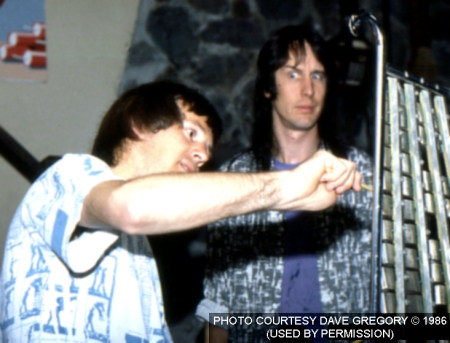
 NOTE: On April 14, 2014, Andy Partridge’s APE House will reissue the so-called “corrected polarity” remaster of Skylarking, with his original cover design, available through
NOTE: On April 14, 2014, Andy Partridge’s APE House will reissue the so-called “corrected polarity” remaster of Skylarking, with his original cover design, available through 